{ vipassana, vipassana meditation, 10 day vipassana meditation retreat, vipassana technique, buddhist meditation, mindfulness meditation, meditation benefits, meditation retreat}
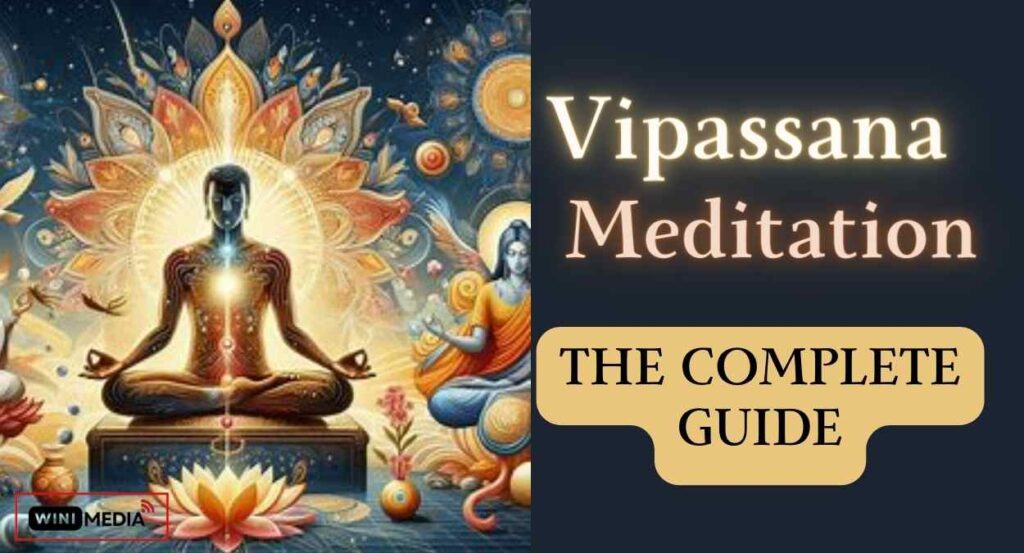
The Life-Changing Power of Vipassana: How This Buddhist Meditation Technique Can End Your Suffering
Vipassana meditation is considered one of the most ancient meditation techniques still in practice today. Dating back over 2,500 years to the time of Buddha, Vipassana is derived from the ancient Pali language and roughly translates to “seeing things as they are.”
The foundational premise of Vipassana meditation is that deep insight and awareness can arise from carefully observing our thoughts, emotions, and physical sensations as they occur from moment to moment. By developing the ability to objectively observe these mental and physical phenomena without reacting or judging them, we can gain a profound understanding of the true nature of reality and existence.
Unlike concentration-based meditation practices that involve focusing on a single object like the breath or a mantra, Vipassana encourages open monitoring of the natural flow of consciousness. This allows insights to arise based on direct experiential observation, rather than through analytical thought or intellectual contemplation alone.
Through regular practice, Vipassana aims to liberate the mind from conditioned patterns of thinking and behavior that cause suffering. It offers a pathway to cultivating wisdom, equanimity, compassion, and inner peace.
While commonly associated with Buddhism, Vipassana is truly a non-sectarian meditation technique accessible and beneficial to people of all backgrounds and faiths. It requires no adherence to Buddhist doctrine and places importance only on the experiential practice itself.
In this comprehensive guide, we will explore the origins, techniques, retreats, benefits, and more of this profound practice. Whether you are new to meditation or an experienced practitioner, we hope this guide will provide a deeper understanding of Vipassana and how it can be incorporated into your life.
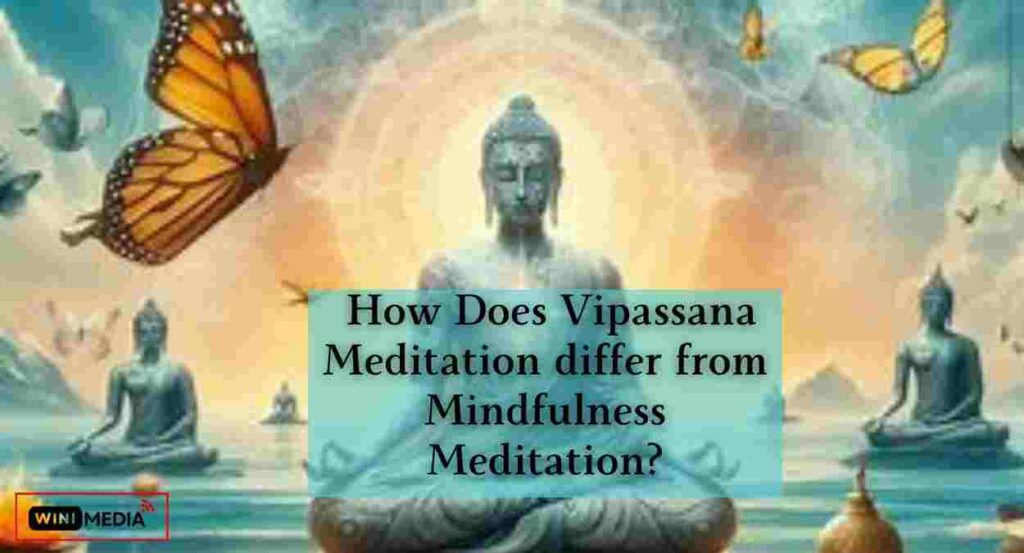
What is Vipassana and How Does it Differ From Mindfulness Meditation?
Vipassana is often compared to mindfulness meditation, as both involve careful moment-to-moment awareness. However, there are some key differences:
- Focus: Mindfulness meditation typically involves focusing on a single object of awareness like the breath, a mantra, or part of the body. Vipassana uses more open monitoring of thoughts, emotions, and sensations as they arise.
- Purpose: Mindfulness aims to cultivate present-moment awareness and concentration. Vipassana uses observation to gain direct insight into impermanence and the changing nature of experience.
- Origin: Mindfulness meditation traces its roots to multiple ancient traditions. Vipassana comes specifically from Buddhist meditation practices.
- Technique: Mindfulness usually relies on repeatedly returning attention to the same object. Vipassana observes the continuous stream of consciousness without interference.
While the two have differences, mindfulness can be viewed as a building block or foundation for Vipassana. Developing strong concentration through mindfulness allows one to then practice the more advanced open monitoring technique of Vipassana.
Here is a table summarizing the key differences:
| Mindfulness Meditation | Vipassana Meditation |
|---|---|
| Focuses on singular object | Open monitoring of all sensations |
| Focuses on a singular object | Seeks insight into impermanence |
| Multiple origins | Buddhist origins |
| Builds present-moment awareness | Returns attention to the object |
In essence, mindfulness and Vipassana are complementary practices, with mindfulness providing the concentration and focus that allows deeper insight to arise during Vipassana. Many practitioners find benefit in blending both techniques.
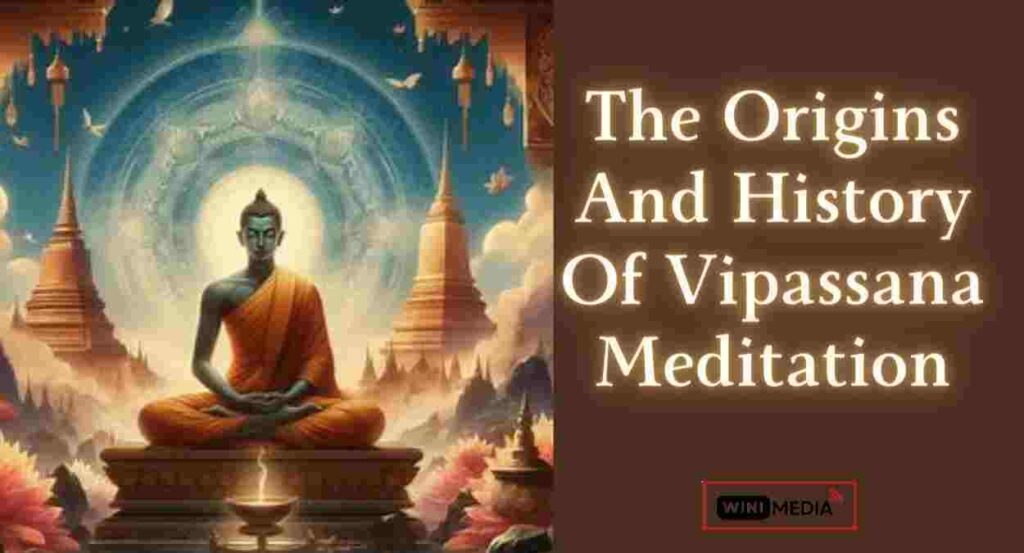
The Origins and History of Vipassana Meditation
Vipassana’s origins can be traced back to the teachings of the Buddha in ancient India over 2,500 years ago. The Buddha practiced and taught various forms of meditation as part of his Noble Eightfold Path for achieving liberation from suffering. Vipassana was one of the core meditation techniques emphasized.
The earliest records of Vipassana come from the Pali Canon scriptures in the Theravada school of Buddhism. The Satipatthana Sutta specifically outlines the fundamentals of Vipassana practice. These teachings would have been passed down orally for hundreds of years before being written down.
Over time, Vipassana faded in India as new schools of Buddhism emerged. But the technique survived in the Theravada strongholds of Myanmar, Sri Lanka and Thailand where the traditional teachings were preserved.
In the 19th and 20th centuries, Vipassana saw a revival in India led by teachers such as Ledi Sayadaw and Anagarika Munindra who studied the technique in Myanmar. S.N. Goenka was a student of Sayagyi U Ba Khin in Myanmar and brought Vipassana back to India in 1969.
Goenka went on to train teachers and establish meditation centers worldwide. The technique quickly spread globally through 10-day retreats and courses. Today, Vipassana continues to be taught in the tradition passed down from teacher to student from the Buddha himself.
This unbroken chain of teachers ensures the technique is transmitted in its authentic, original form, providing today’s practitioners the same opportunity for liberation the Buddha’s followers sought centuries ago.
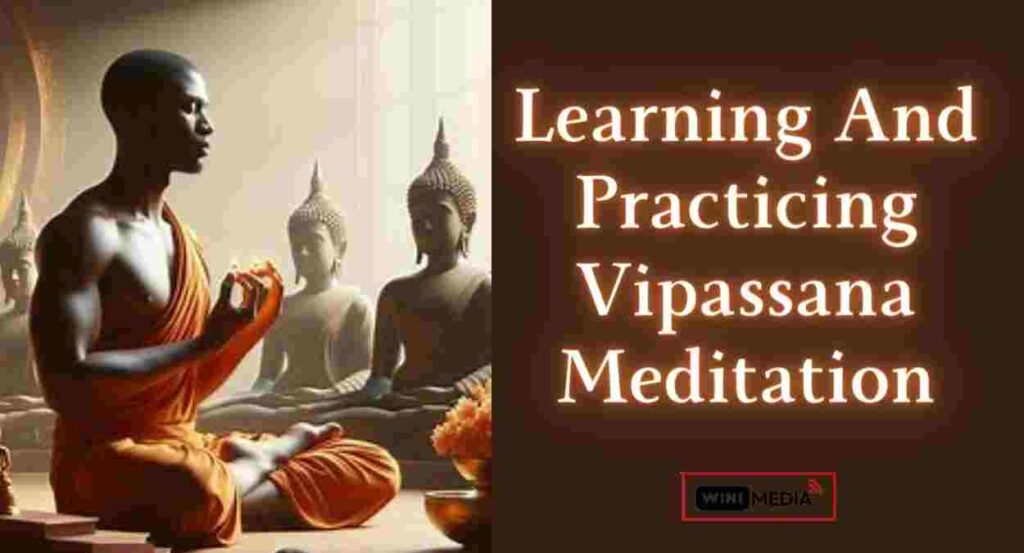
Learning and Practicing Vipassana Meditation
While simple in concept, to truly learn Vipassana meditation, it is advisable to study with an authorized teacher within the tradition. There are now hundreds of Vipassana meditation centers and teachers offering courses worldwide.
Vipassana is typically taught through a 10-day residential silent retreat. Retreats are structured to gradually introduce students to the technique in a safe and controlled environment. This intensive immersion jumpstarts the practice and instills proper techniques.
After completing an initial 10-day course, students can then continue to practice Vipassana in daily life using the tools and framework learned during the retreat. Ongoing courses are also offered for more advanced students.
For those unable to attend a Vipassana retreat, there are now online, app-based, and self-guided Vipassana options. However, learning directly from a teacher is still optimal, providing guidance and answering questions that may arise.
The practice of Vipassana meditation involves three interconnected parts:
Sila – Living ethically by following moral precepts such as no killing, stealing, sexual misconduct, lying, or intoxication. This provides a foundation for clarity of mind.
Samadhi – Developing concentration and stillness of mind through mindfulness meditation practices like focusing on the breath.
Panna – Gaining wisdom by observing sensations within the body with equanimity and awareness to see their impermanent nature.
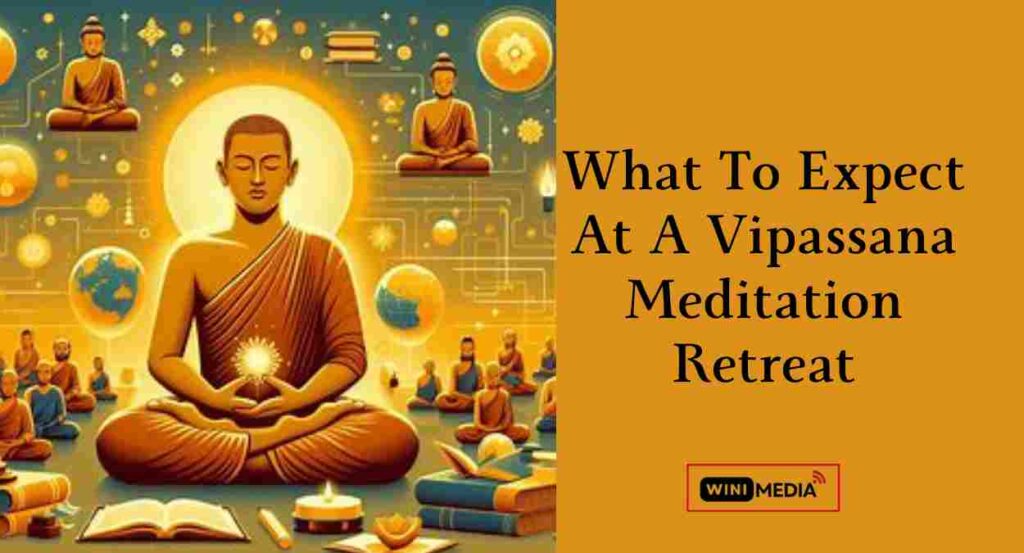
What to Expect at a Vipassana Meditation Retreat
Attending a 10-day Vipassana silent meditation retreat can be a profoundly challenging yet rewarding experience. The rigorous schedule and strict rules provide optimal conditions for developing deep concentration and insight.
The day typically begins around 4:00 AM with a morning wake-up gong. Students then meditate until about 8:00 AM when breakfast is offered. Meals are taken communally in silence. Noble Silence is observed throughout the course, with no communication between students allowed.
The rest of the day consists of blocks of meditation practice, including periods of walking meditation. There are video discourses in the evenings explaining the next day’s techniques and providing inspiration. Lights go out around 8:30 PM.
The first 3-4 days focus on Anapana meditation, cultivating awareness of the natural breath. This builds concentration and mindfulness, preparing the mind for Vipassana.
The remainder of the course introduces Vipassana proper, carefully observing bodily sensations and understanding their impermanence. A variety of sitting and walking meditations are used to sharpen awareness and equanimity.
Students often experience a rollercoaster of challenges and insights ranging from boredom, doubt, pain, and fear to clarity, calm, and profound realizations. Teachers provide guidance and encouragement to work through difficulties.
While demanding, retreats provide an optimal environment free of everyday responsibilities and distractions. Students often emerge with a deepened meditation practice and tools to continue applying Vipassana in daily life.
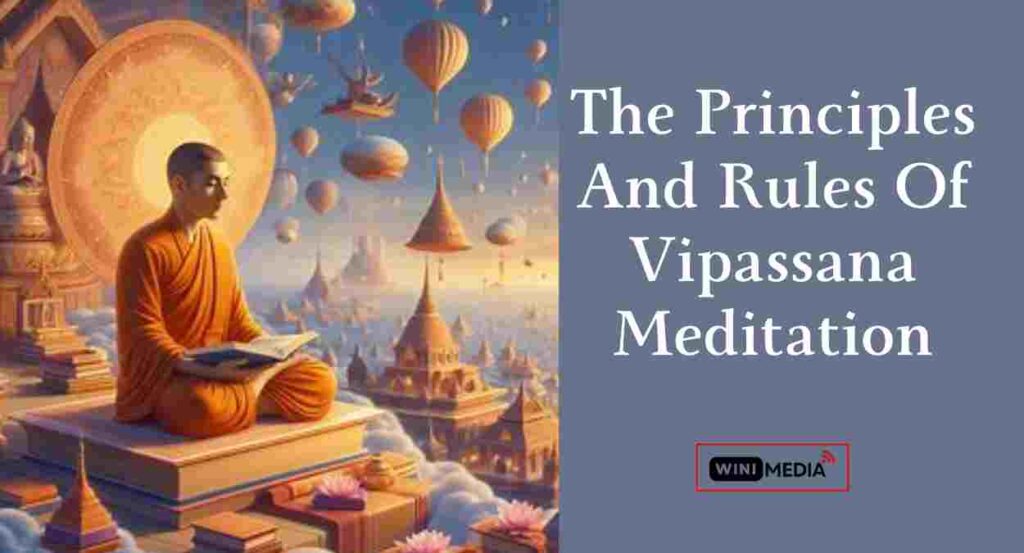
The Principles and Rules of Vipassana Meditation
Vipassana courses follow certain principles and rules designed to create the ideal environment for learning and integrating this powerful meditation technique. These include:
The Five Precepts
Students commit to following five ethical precepts for the duration of the course:
- No killing or harming other beings
- No stealing
- No sexual activity
- No lying or exaggerating
- No intoxicants or substances that cloud the mind
Adhering to these precepts develops mastery over the mind and body, providing a strong foundation for wisdom to arise.
Noble Silence
Students maintain Noble Silence throughout the retreat. Verbal, physical, or eye communication with others is prohibited. Silence minimizes distractions, turns the focus inward, and supports the intensive work of meditation.
Segregated Accommodations
Men and women stay in separate dormitories with segregated dining and meditation areas. This supports the environment of silence and turns attention away from socializing or relationships.
Disciplined Routine
The rigorous daily schedule of meditation, meals, rest, and evening discourses provides continuity. Students focus fully on practice without concern for everyday responsibilities.
No Devices or Reading Materials
No devices, books, pens or other distractions are permitted. Students cannot leave the grounds or engage in non-meditation activities. These rules maintain the purity of focus.
By providing ideal conditions free of distractions, Vipassana courses enable profound experiences and insights that would otherwise be difficult to access in everyday life. Students can then integrate what they learn into their normal routine.
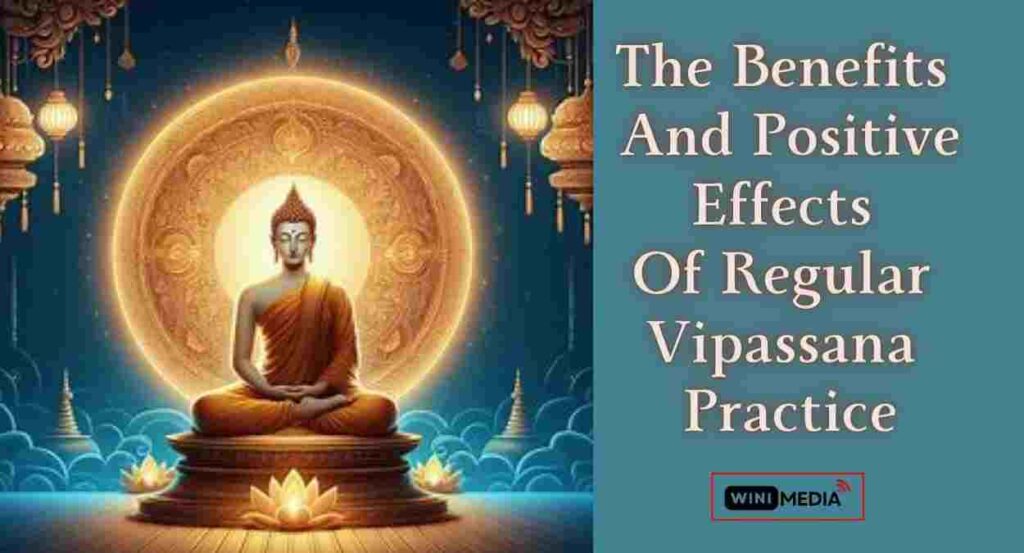
The Benefits and Positive Effects of Regular Vipassana Practice
Regular Vipassana meditation practice has been associated with numerous benefits backed by scientific research. Some of the main benefits include:
Reduced Stress and Improved Mental Health
Several studies have found Vipassana meditation is effective at reducing stress, anxiety, and depression. It calms the nervous system, promoting a sense of relaxation and well-being.
Increased Self-Awareness and Emotional Intelligence
Through objectively observing our thoughts and emotions, Vipassana enables us to understand the underlying mechanisms behind them. This meta-awareness provides a high level of self-knowledge and insight.
Improved Sleep Quality
Research shows Vipassana can help improve sleep efficiency, total sleep time, and overall sleep quality. The calming effect helps regulate sleep cycles.
Enhanced Focus and Cognitive Function
Studies point to enhanced attention, concentration, and executive functioning resulting from Vipassana practice. This is likely due to strengthening the brain’s prefrontal cortex through meditation.
Positive Structural Brain Changes
Neuroimaging studies reveal that regular Vipassana practice increases grey matter density and volume in regions linked to learning, memory, self-awareness, and emotional regulation.
Greater Compassion and Equanimity
By learning to objectively observe thoughts and emotions, Vipassana helps dissociate from negative mental patterns. This allows responding to others with greater empathy, compassion and emotional balance.
Is Vipassana Meditation Right for Me?
While Vipassana can benefit many people, it is not necessarily suitable for everyone. Those with certain physical or mental health conditions should exercise caution or avoid Vipassana until their condition has stabilized.
Physical Limitations
Since retreats involve sitting still for many hours, those with chronic pain, mobility issues, or other physical limitations may struggle with the rigorous schedule. Beginners should build pain tolerance gradually.
Severe Mental Illness
People with unmanaged psychiatric disorders like schizophrenia, psychosis, or severe depression should avoid intensive retreats due to the lack of proper support. Vipassana teachers are not mental health professionals.
Pregnancy and Breastfeeding
The demanding schedule and abstention from sexual activity is not recommended during pregnancy or breastfeeding. It may be resumed postpartum when physical and mental energies rebalance.
Medications
Certain psychiatric or habit-forming medications are prohibited since Vipassana requires a clear, unaltered mind. Doctors should be consulted before discontinuing medication for a course.
Age and Maturity
While there is no fixed age minimum, most centers place age limits of 10-15 for courses, as a certain level of maturity is required. Children’s courses may be offered separately.
Checking with a doctor, coming off medications safely, and working up to longer sits through daily practice can help assess readiness for Vipassana. The support of an experienced teacher is also essential.
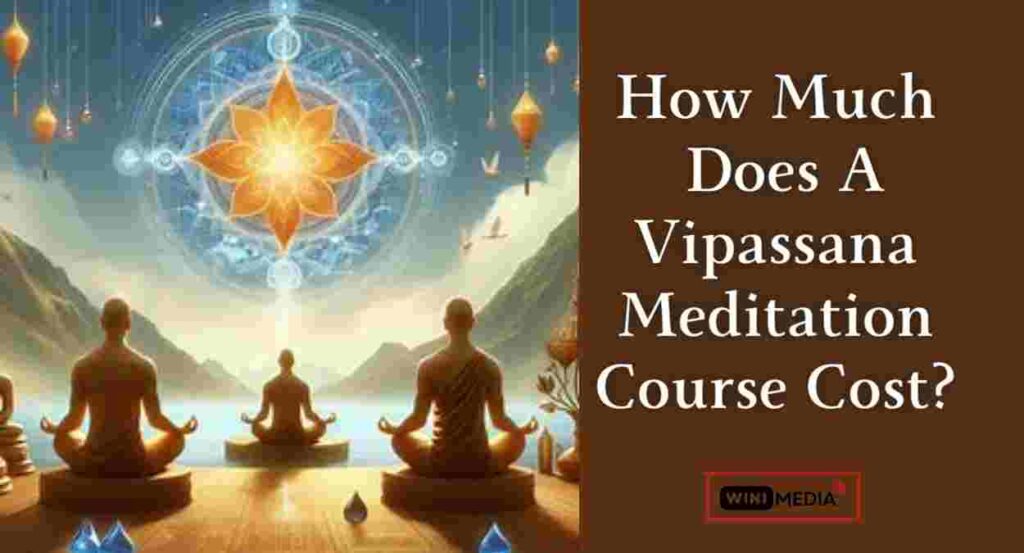
How Much Does a Vipassana Meditation Course Cost?
One of the unique qualities of Vipassana is that the meditation technique is always offered free of charge, no exceptions. This allows anyone who is interested to learn regardless of financial status.
10-day courses, lodging, and meals are fully funded by donations from past students motivated by the benefit received and wishing to give others the same opportunity. New students are asked only to cover travel and other incidental costs.
At the end of the course, students are invited to make a donation according to their means, to help cover expenses and support future students. But there is no fee or mandatory contribution.
There are over 200 Vipassana centers worldwide that operate on this model of generosity. The lack of fees contrasts many other meditation or self-help programs that can be prohibitively expensive for some.
This spirit of dāna or generosity is an integral part of what keeps the teachings pure. With no financial motives, Vipassana teachers focus solely on passing on the practice for the benefit and liberation of others.
FAQs:
Q: What is Vipassana meditation and how does it work?
A: Vipassana is an ancient Buddhist meditation technique that aims to provide a clear insight into the true nature of reality. It works by carefully observing bodily sensations and mental phenomena without reacting, allowing you to understand impermanence and let go of attachments.
Q: What happens during a 10-day Vipassana retreat?
A: 10-day retreats involve noble silence, a rigorous schedule of 10+ hours of meditation per day, simple vegetarian meals, teacher discourses, and strict codes of conduct. The time is spent mastering concentration and mindfulness to prepare for Vipassana.
Q: What are the benefits of Vipassana meditation?
A: Benefits include reduced stress and anxiety, increased self-awareness, improved focus and cognitive function, deeper compassion, positive brain changes, relief from depression, and an overall increase in clarity and equanimity.
Q: Is Vipassana meditation safe for beginners?
A: Vipassana is generally safe for most beginners but some considerations should be made for those with limiting physical conditions, mental illness, or taking certain medications. Checking with a doctor is recommended.
Q: Can Vipassana cure mental illness or physical problems?
A: While beneficial, Vipassana should not replace professional medical or psychiatric treatment. It can support healing and provide mental clarity during illness, but is not a standalone cure.
Q: How long until I see results from Vipassana?
A: Most students report noticing positive effects like reduced reactions and more mindfulness within the first 10-day retreat. Longer-term results emerge gradually through regular practice. Full liberation requires immense practice.
Q: Where can I take a Vipassana course?
A: Vipassana courses are taught all over the world for free. You can find local centers and register for retreats via the Vipassana website at dhamma.org. Courses require applying in advance.
Conclusion: Integrating Vipassana Meditation Into Daily Life
Vipassana provides a powerful framework for observing reality and achieving liberation from suffering. By implementing the steps for sila, samadhi, and panna in our daily lives, we can live more mindfully, ethically, and wisely.
Regular practice leads to reduced stress, increased equanimity and compassion, an understanding of impermanence, and an experience of life’s true essence beyond ego. With time, Vipassana transforms us at a fundamental level, bringing us closer to the peace and insight the Buddha himself sought.
For those drawn to experience the profound benefits of this ancient art, Vipassana meditation courses are available worldwide. With an open mind and sincere effort, this simple but transformative technique can positively impact both our own lives and the world at large.
Also Read






























